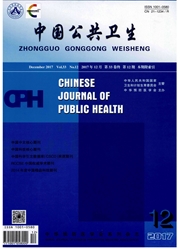

 中文摘要:
中文摘要:
目的 了解艾滋病综合防治示范区性服务者艾滋病相关知识与行为状况,为改善其性行为干预提供依据。方法 由当地卫生专业人员担任调查员,采取单独面对面访谈的形式,记录并完成问卷的填写。结果512名性服务者艾滋病相关知识的总体知晓率为74.6%,其中对防治知识、传播途径和非传播途径的知晓率分别为68.5%,88.4%,73.2%。20岁年龄段对传播途径的知晓率最高,为89.5%,30岁年龄段对传播途径的知晓率最低,为58.0%。宴际获得知识途径的前3位为电视(85.9%)、招贴画和挂图(57.8%)、报纸杂志,希望获得知识的途径前3位.则为电视(76.8%)、医生(40.0%)和报纸杂志(31.1%)。过去3个月性服务中每次使用安全套的占57.9%,与固定性伴每次使用的占13.4%。结论 应加强对性服务者艾滋病非传播途径及预防知识的教育,并以高年龄组为重点;要突出大众媒介以及医生在健康教育中的作用,从单纯关注性服务者的知识了解转变为促进其行为改变。
 英文摘要:
英文摘要:
Objective To explore HIV/AIDS-related knowledge and behaviors among commercial sxe workers(GSWs) in China CARE sites of Anhui province, and inform future intervention. Methods CSWs were interviewed by trained local CDC staff using structured questionnaire. Results A total of 512 GSWs were interviewed and their responses to HIV/AIDS- related knowledge questions were 74.6 % correct. Their percentage of correet answers about prevention methods, transmission and non-transmlssion routes were 68.5 %, 88.4 % and 73.2 %, respectively. The knowledge about transmission routes was the highest among CSWs of 20-30 years old (89.5 % );While the knowledge about non-transmission routes were the lowest among CSWs above 30 years old (58.0 % ). The top three most frequently referred to sources of HIV information were TV (85.9 % ), propaganda posters ( 57.8 % ), newspaper and magazine ( 56.8 % ). while the most commonly mentioned favorite ways of acquiring the knowledge were TV(76.8 % ), physicians(40.0 % ), and newspaper and magazines(31.1% ). 57.9 % of the CSWs used condoms every time during sex with clients in the past 3 months; 13.4 % used eondoms every time whth longterm sex partners during the past 3 months. Conclusion CSWs education should emphasize on non-transmission routes and prevention knowledge, and foeus on those over 30 years old. Full use of mass media and physicians should be used in the education. Education should be tailored to the CSWs' need and the foeus of education should be changed from knowledge disseination to behavior modification.
 同期刊论文项目
同期刊论文项目
 同项目期刊论文
同项目期刊论文
 期刊信息
期刊信息
